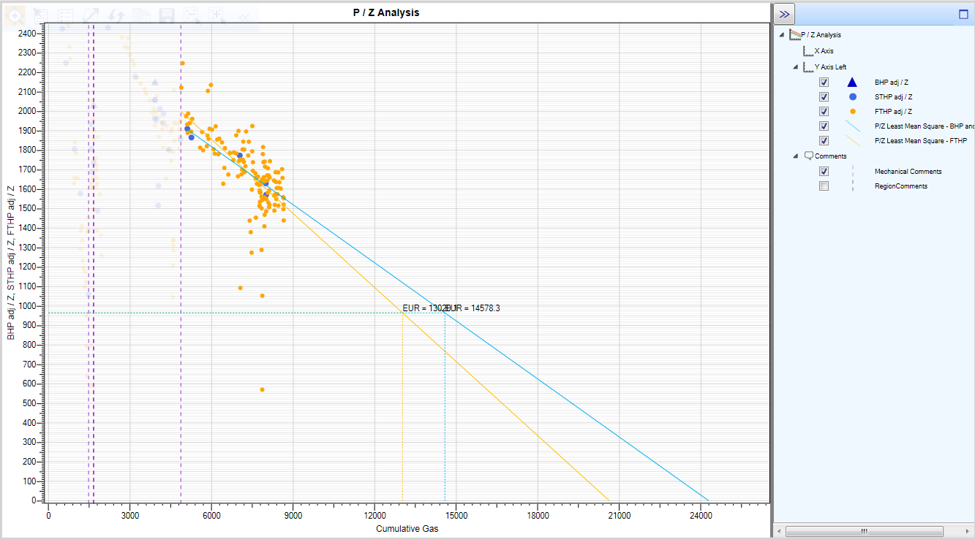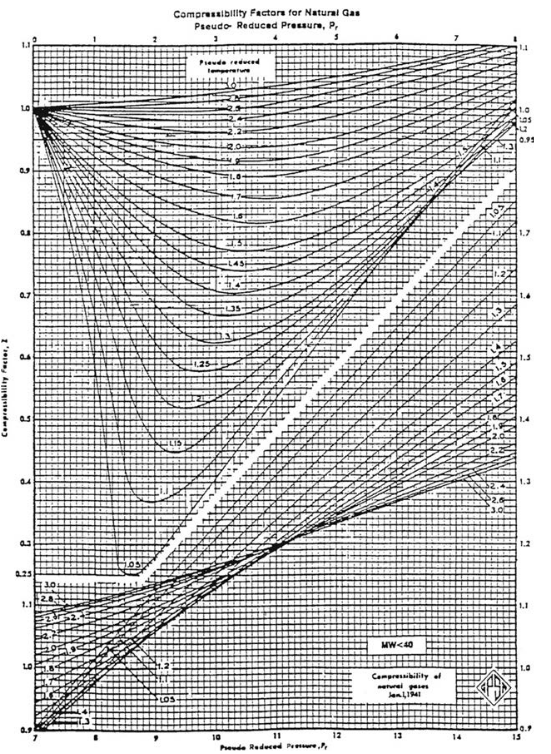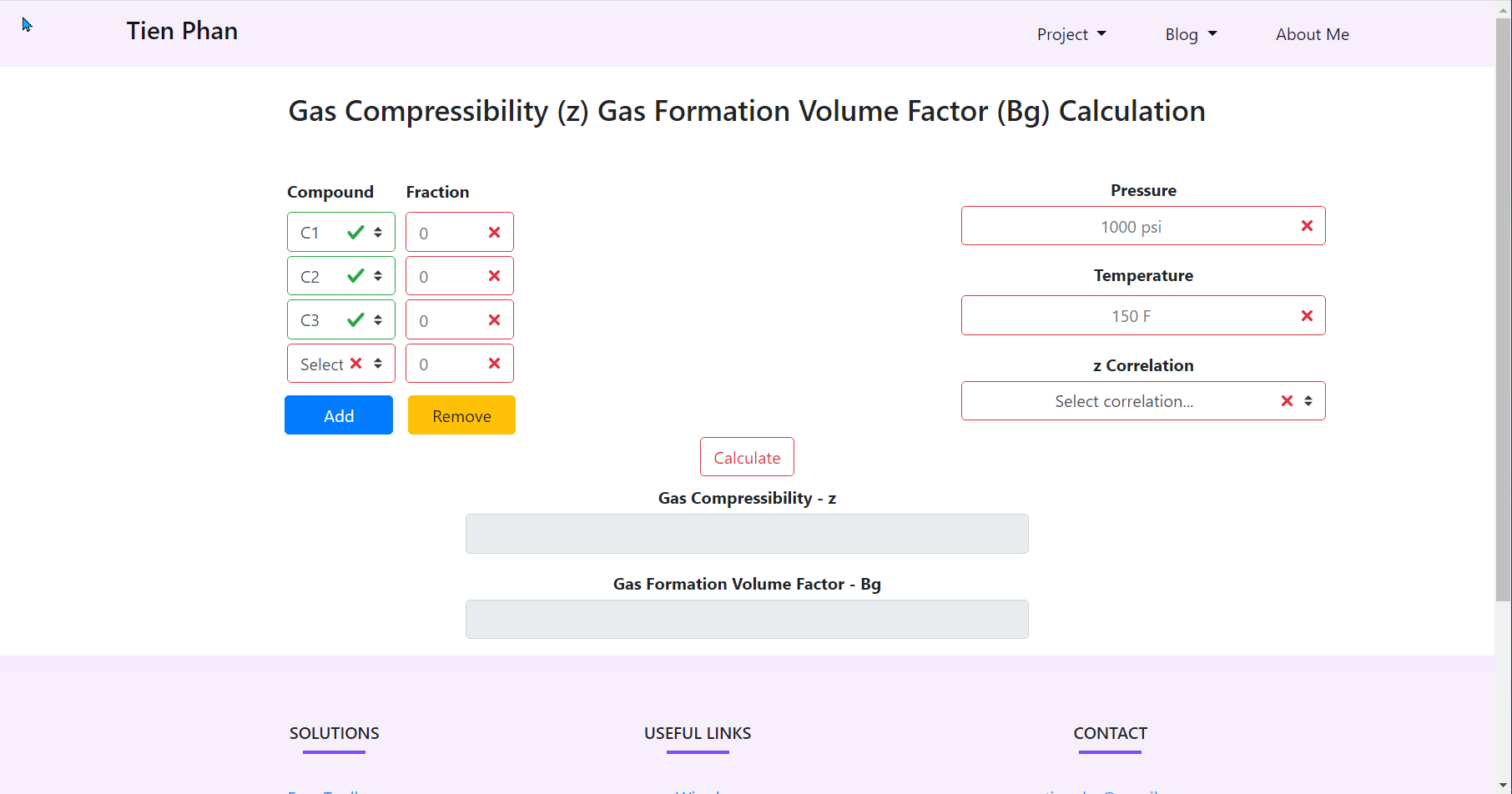Background
Gas Formation Volume Factor; denoted as Bg; is defined as the volume of gas at the reservoir conditions (pressure and temperature) required to produce one standard cubic foot of gas at the standard conditions (14.7 psia and 60°F). The gas formation volume factor can be calculated from the gas compressibility factor (Zg) using the following equation:
[1]
where
Z : Gas compressibility
R : Gas constant
T : Reservoir temperature
P : Reservoir pressure
Bg is an essential parameter which is typically used in gas volumetric, material balance calculations, and PVT analysis.
In a gas reservoir, gas volumetric is computed from the following equation:
[2]
where:
GIP: Gas in place,
phi: Reservoir porosity,
h : Reservoir thickness,
Sw : Water saturation,
A : Drainage reservoir area, and
Bgi : Gas formation volume factor.
An accurate determination of Z will be critically beneficial to the estimation of gas reserves via P/Z performance plot:
[3]
where:
P : Reservoir pressure,
Z : Gas compressibility,
Pi : Initial reservoir pressure,
Zi : Initial Gas compressibility,
Gp : Cum. Produced Gas,
GIP: Gas in Place.

Fig 1. P/Z plot for gas reserves estimation
Correlation
Gas compressibility; Zg in equation [1] can be determined from the PVT laboratory data (CCE and CVD) or from correlations where gas gravity and gas specific gravity are known. Otherwise, gas composition is required to compute the gas compressibility. The gas compressibility factor is a function of gas composition, pressure, and temperature.
Standing & Katz (1954) chart in (Figure 2) is commonly used in oil and gas industry to estimate the gas compressibility for a natural gas reservoir with minor non-hydrocarbon components.

Fig 2. Standing and Kart Compressibility factor [Ahmed T, 2019]
Emperical correlations by Hall Yarborough (1962), Dranchuk & Abou-Kassem (1963), Dranchuk (1964), Purvis & Robinson (1964), Begg & Brills (1964) are available to directly compute the Z factor, as describled in the Reservoir Engineering handbook written by Ahmed T.
Deploy on Web Application
Herein I build an application to compute Z and Bg factors on Web-based. The zFactor package developed by Alfonso R. and available in CRAN is reproduced in this project to compute gas compressibility factor from the gas composition. The gas compressibility factor is then used to compute the gas formation volume factor.
Technologies used in this project are: Mongo DB, NodeJS, and EJS. We deployed the App and publicized on pntien.com. 😃 😦 😎 😉

Fig 3. Bg and Z Web App
Reference
Next
In the next project, we will capture the effect of non-hydrocarbon components in the gas composition on the z factor.